Despite winning the ODI and T20 series, Hashim Amla will not call this tour a successAs India finally lifted the Freedom Trophy after losses in both the ODI and T20 series, there was a sense of triumph within their side. Quite in contrast, South Africa were left to ponder their poor display of cricket over the last month and do some soul-searching to figure out what went wrong. South Africas 3-0 loss was their worst since a similar scoreline against Australia in 2005/06. From being a behemoth in test cricket over the past few years, South Africa were reduced to almost nothing in the test series against India, including a record-low of just 79 runs in the third test at Nagpur.South Africa were outplayed in all the four games, and even an epic blockathon could not save them in the fourth test at Delhi. South Africas mindset seemed to change with every match as the tour went on. In Mohali, they were indecisive and reserved. In Bengaluru, they were agggressive and tried to premeditate. In Delhi, they were majorly defensive, and in Nagpur, they gave up the ghost completely. Indias return to form after a series of overseas losses will be heartening for fans, but South Africans will wonder and hope that this loss will be just a small obstacle during the times to come.South Africas oscillating mood changes were but one reason they ended up on the wrong side of the series. Lets take a look at some others:
#5 Turning Tracks
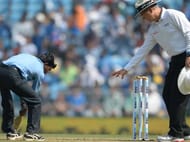
Much has been said about the turning tracks that India provided in two of the four tests in the series – the one at Mohali as well as Nagpur. Even if the Mohali pitch barely passed scrutiny, the pitch at Nagpur was given a “poor” rating by match referee Jeff Crowe. On December 1, the ICC released a statement which said that the pitch used in Nagpur was poor and that the BCCI had to respond in 15 days. The BCCI are currently opposing vehemently, and it must be seen as to what transpires over the next week.
While the South African team management refused to criticize the pitch in any way, skipper Hashim Amla admitted that it was the “toughest surface” he had ever played on. The Nagpur test was the turning point in the series as it was where India managed to clinch it after being 1-0 up in the series. The ball spit and turned viciously from Day 1, and even the Indian team, who are usually so prolific at home, could only manage 215 and 173, with the highest score in the entire match a mere 40 runs.
The pitch drew severe criticism from several former cricketers, but the Indians hit back by stating that it was the same as the green tops that were prepared for them overseas. While it may seem to be a fair argument, it is not. Even if the pitches are prepared to be outright green-tops, though the swing and seam is prodigious, the bounce does not vary. The batsman can judge the movement of the ball and play it on its merits without worrying about the variable bounce.
But on the dustbowls prepared by India, the ball has unpredictable bounce, with it either shooting between the batsman’s ankles or rearing up and hitting him on the glove. Furthermore, the green top pitches always flatten over time, giving the batsmen a good chance while the turning tracks only deteriorate over time. Therefore, after playing on good tracks in the ODI series, the South African batsmen could not cope with the spinning surfaces in Mohali and Nagpur, which turned the match in India’s way.
#4 Poor form of batsmen
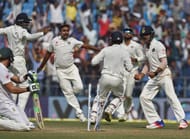
All other reasons notwithstanding, the truth is that South Africa’s poor performance was because of one thing – their batsmen failing to perform. A quick look at the stats show that 7 of India’s batsmen have scored more than 100 runs in the series in comparison to only 3 of South Africa’s. Four Indian batsmen have scored more than 200 runs, but for South Africa, only one batsman has managed it. Ever since Mohali, the South African batsmen simply failed to come to the party as the Indian bowlers routinely managed to dismiss them for low scores.
Their problems began at the top of the order, where new-comer Stiaan Van Zyl was all at sea against Ashwin. The left-hander was dismissed in all his five innings by Ravichandran Ashwin, and South Africa’s first wicket always fell within 10 overs. An ever bigger surprise was Faf Du Plessis, who had four single-digit scores in the series that included two ducks. He looks completely at a loss while playing the Indian bowlers, and batted with a lot of indecision.
Hashim Amla was but a shadow of his old self, and he often got out to premeditated shots. His blockathon on the final test was a gritty knock, but the fact remains that his series average of 16.85 was his worst ever performance where he has played 4 or more innings in a series. JP Duminy was injured for the first test, but failed to make a major impact as well, as he was found wanting by Ashwin. Duminy slightly modified his technique and tried to neutralize Ashwin’s spin by standing outside off-stump, but the Indian spinner got the better of him more than once.
Only AB De Villiers managed to bat consistently in the series, but the lack of a good partner eventually did South Africa in. While the rest of the batsmen floundered, it was De Villiers who took South Africa to some respectability in the series. While the Proteas’ bowling came good, it was their lack of batting form that saw them lose the series.
#3 Lack of application
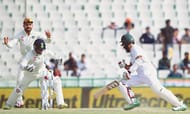
To counter the square turners at Mohali and Nagpur, the Proteas decided to go on the offensive from Day 1. Since the pace and bounce of the deliveries could not be sufficiently gauged, the South African batsmen were extremely wary of playing on the back-foot, especially against Ravindra Jadeja, whose variations were difficult to pick. Therefore, instead of waiting it out like the Indians did, they went on the front-foot and tried to premeditate shots, which lead to their downfall.
Skipper Hashim Amla led the way right from the first test. In Mohali, he skipped down the track against a rampaging Ashwin and tried to flick the ball to midwicket, but the ball spun past his bat and he was stumped. Dean Elgar followed suit, by trying to slog-sweep Ashwin against the turn, which led to a top-edge being taken at point. Dane Vilas’ dismissal was a copy of that, as his sweep was also held at square leg. De Villiers played a good hand in the first innings, but even he was undone in the second. Trying to up the run-rate, he tried to move around a bit too much in the crease, which led to him being bowled by a quick slider by Amit Mishra.
The South Africans did not learn their lessons in the second test either. Though the pitch was not bad, they still tried to go for their shots. Faf Du Plessis came down the track and flicked it straight to Pujara at short leg. De Villiers tried to go for the big shot and edged it on to his pads, which was taken by Saha. It was the same in the third test as well.
Dean Elgar inside-edged the ball on to his stumps after going for an extravagant cut shot. Hashim Amla tried to go for a cute sweep, which took the top-edge. De Villiers tried a weird punch-slap, which only went as far as the bowler, and Du Plessis played completely down the wrong line. The Nagpur pitch actually evened out as the days went, which they found out in the second innings, so fans were left wondering what could have been if the Proteas had stuck to playing defensively in the first.
Unlike India, who blocked the good balls and only put away the bad ones, the South Africans were hell-bent on dictating the game. They did not respect the good deliveries and tried to hit their way out of trouble, which led to them being dismissed for low scores. The low scores of the Indian team could be explained by their relatively inexperienced middle order, but South Africa’s string of low scores can only be put down to bad batting.
#2 Demons in their minds
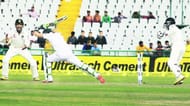
South Africa always knew what was coming to them even before the test series started. As the prospect of rank turners stared them in the face, they picked three spinners in Imran Tahir, Dane Piedt and Simon Harmer. Despite the fact being an open secret, South African failed to adapt themselves to the conditions both physically as well as mentally. Their batting failures aside, South Africa were mentally unprepared to face India at both Mohali and Nagpur, which is evident from some of the shots they played.
Right from the first innings at Mohali, South Africa’s indecisive mindset was clear. Stiaan Van Zyl shouldered arms to a straight delivery and was adjudged LBW. Faf Du Plessis did the same to Jadeja, and got his off-stump knocked back. In the second innings, Hashim Amla left a ball pitched on middle and saw his stumps disturbed. Nightwatchman Vernon Philander played for excessive turn and was adjudged LBW off the arm ball. In all the cases, the batsmen had played for spin and were undone by harmless straight deliveries.
Normally, all they had to do was block it down the middle-stump line. But due to the hesitancy created in their mind from all the talk of the pitch, they decided to leave it rather than play it, and were either castled or adjudged LBW. In the first two matches, the Indians only had to do half the work as the South Africans found new ways of getting out. Mountains of wickets fell with the batsmen simply playing down the wrong line, as they failed to gauge the variation of the delivery. Perhaps fittingly, even the last ever dismissal of the series was when Morne Morkel shouldered arm to yet another straight one which hit off-stump.
While teams like Australia use sledging tactics to unnerve the opposition, India used the prospect of rank turners to get into the minds of the usually-immovable South Africans and played havoc with their mentality on the cricket pitch. South Africa needs to put the matter behind them and get their game together, or they will find their position on the top of the Test rankings in dire straits.
#1 Indian spinners
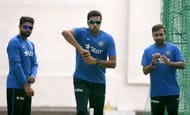
While it is true that South Africa had weaknesses within their side, the simple truth behind their poor performance was the brilliance of India’s spinners. Both Ravichandran Ashwin and comeback-man Ravindra Jadeja fired India to victory in all the three matches, and they were instrumental in the 3-0 victory of Kohli’s men. Be it the turning tracks of Mohali and Nagpur, or the even pitches of Bengaluru and Delhi, Jadeja and Ashwin found their rhythm to dismiss South Africa for a string of low scores.
Ashwin picked up 31 wickets at 11.12 in the series, picking up his fifth Man-of-the-series award in the process, the joint highest by any Indian. Ashwin also became the top-wicket taker in 2015, and if he finishes that way, he will be the first Indian to top the wicket charts since Anil Kumble in 2007. Ashwin’s flight and drift troubled all the South African batsmen equally, and he even picked up nemesis AB De Villiers twice in the series, including the fourth test when the batsman was in the middle of an epic innings. Ashwin was brilliant towards the left-handers as well, picking up Stiaan Van Zyl in all 5 innings that they faced off against each other, as well as JP Duminy in the middle order.
If Ashwin used flight and guile to trouble the batsmen, Jadeja used pace and accuracy. Jadeja picked up 23 wickets at 10.82 in the series, where he used his arm ball to great effect. With a negligible change of action, Jadeja was able to bowl both the regular off-spinner as well the straighter one, which none of the batsmen could pick. In the first test, the South Africans found their stumps disturbed by the arm ball when they shouldered arms to him. When they tried to cover their line in the fourth test, Jadeja spun it past their bats to hit the off-stump. He was almost unstoppable in Bengaluru, where he picked up 4 wickets on a pitch that wasn’t really a rank turner like Mohali or Nagpur.
Amit Mishra was the dark horse amongst the spinners as he was dropped for two of the four tests since Kohli wanted to try an extra batsman. But in the two he played, he bowled beautifully. He picked up AB De Villiers twice in the first test to starkly different deliveries. The first was a leg-spinner’s dream – a tossed up ball which spun past the bat to hit the stumps. The second was more brutal. A quick slider which snuck past bat and pad to disturb the wickets. Mishra was also key in the Nagpur test, where he broke the 72-run partnership between Du Plessis and Amla by taking out both batsmen in the second innings of the game.
All three Indian spinners spun a web around the South African batsmen to deny them even a fighting chance in the series, While the pacers shone once in a while, the series was all about the spinners as they took India to a comprehensive win. It could be said that only the rain stopped a chance of a whitewash. While Mishra would rue his bad luck of being dropped, both Ashwin and Jadeja will be basking in the glory of the success, and South Africa would be left to ponder what went wrong.
Check RCB Squad 2024 Details. Follow Sportskeeda for IPL 2024 Live Score, Schedule, Points Table
